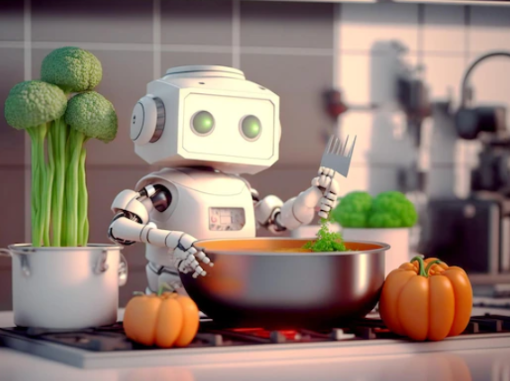
IoT Sensors and Artificial Intelligence: The Keys to a New Generation of Robots Transforming the Culinary World
The world of kitchens and gastronomy is slowly but surely being redefined by innovative technologies. With the help of robotic arms, integrated sensors, optical cameras, and enhanced artificial intelligence technology, a new breed of robots is emerging, designed primarily to perform multiple tasks in the kitchen, executing actions and movements of chefs in real time.
This shift occurs in a context where the global number of smart homes could reach around 478 million by 2025, while the global human population is expected to reach 8 billion before the end of 2022. This implies a rise in food demand, increased pressure on the global food industry, and a call for better and more sustainable food quality from consumers, a context where technology can definitely contribute.
“Robot chefs” or cooking-focused robots are equipped with tactile, contact, and proximity sensors to record tasks and capture movements, monitoring more than 1,200 parameters every microsecond. All the information collected by these sensors is sent to their operating systems, creating a learning cycle similar to that of a human. With these functions, they can automate many kitchen tasks and learn new skills.
Furthermore, the dataset used for their training allows them to know recipes, determine when ingredients need to be replaced, and measure quantities.
The benefits of these technologies for the culinary world are numerous. These robots can address the problem of staff shortages in most restaurants, fast food establishments, and high-volume kitchens. At the same time, they can complement or take over repetitive and serial tasks from humans, reducing costs and improving the customer experience.
Additionally, by dispensing the necessary ingredients for each meal, “robot cooks” help reduce food waste and costs by eliminating human error that arises from overestimation. They also contribute to sustainability by monitoring and controlling the environment of food storage containers to prevent ingredient spoilage.
For example, Moley Robotics operates as an autonomous AI system capable of automating virtually all parts of the cooking process. It is a ceiling-mounted device that works in conjunction with a complete smart kitchen. With its two arms, it glides along a rail, adjusting temperature, washing, mixing, and pouring ingredients into pans, as well as stirring pots, cooking over 5,000 meals at once and cleaning up when finished.
Rozum Robotics’ Barista Coffee Robot, for instance, consists of a coffee station equipped with top-of-the-line preparation devices and a robotic arm designed to prepare any cup of coffee, capable of creating up to 400 specialty cups in 12 hours.
Flippy Wings is an autonomous robot designed to fry chicken wings in restaurants. It features an AutoBin system with secure food containers where restaurant staff can leave food to be cooked. The integrated AI vision identifies the food, and the robot picks it up, cooks it, and then places it in a hot holding area, increasing food production speed by approximately 10% to 20%.
Pizzaiola is a fully autonomous seven-axis robotic chef that uses artificial intelligence and machine learning to prepare up to 50 pizzas per hour. Chippy, on the other hand, is the robot used by the Chipotle chain to make tortilla chips in seconds, thanks to integrated cameras, motors, sensors, and computer vision algorithms.
Overall, it seems the golden age of technological advancement in the food industry has arrived. What lies ahead will be higher levels of complexity and, consequently, greater rigor in data management and training for programming robots. Researchers at the University of Cambridge are working on robots with chewing capabilities and improved taste sensors to cover the five basic taste modalities, integrating these data into their operating systems to ensure new functionalities and innovations that make them even more similar to humans in the kitchen.
Julio Cesar Blanco – March 22, 2023


